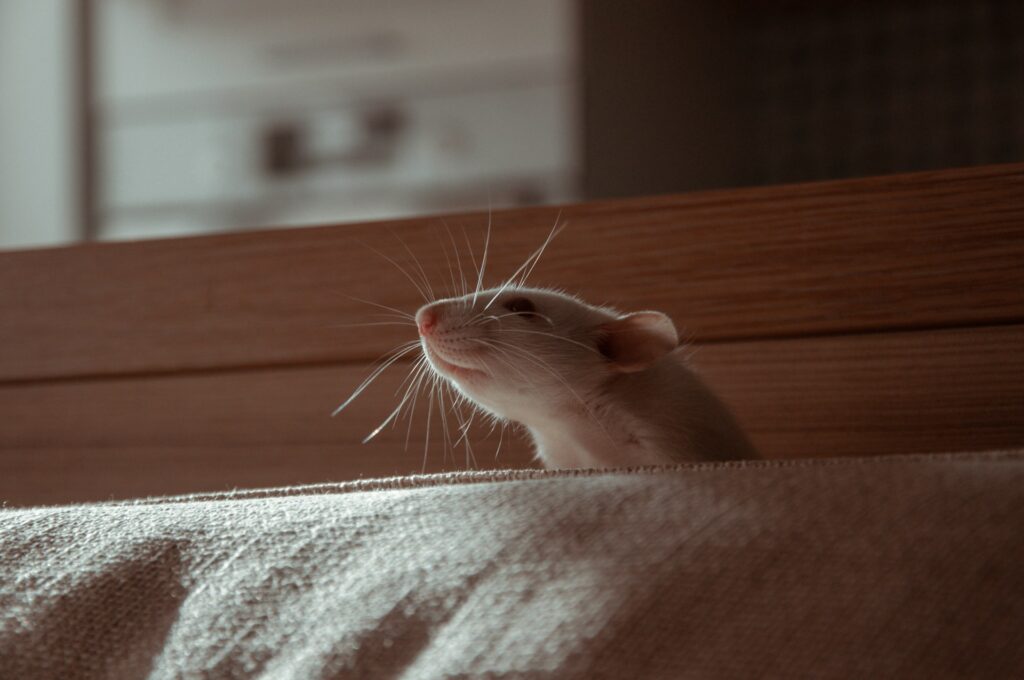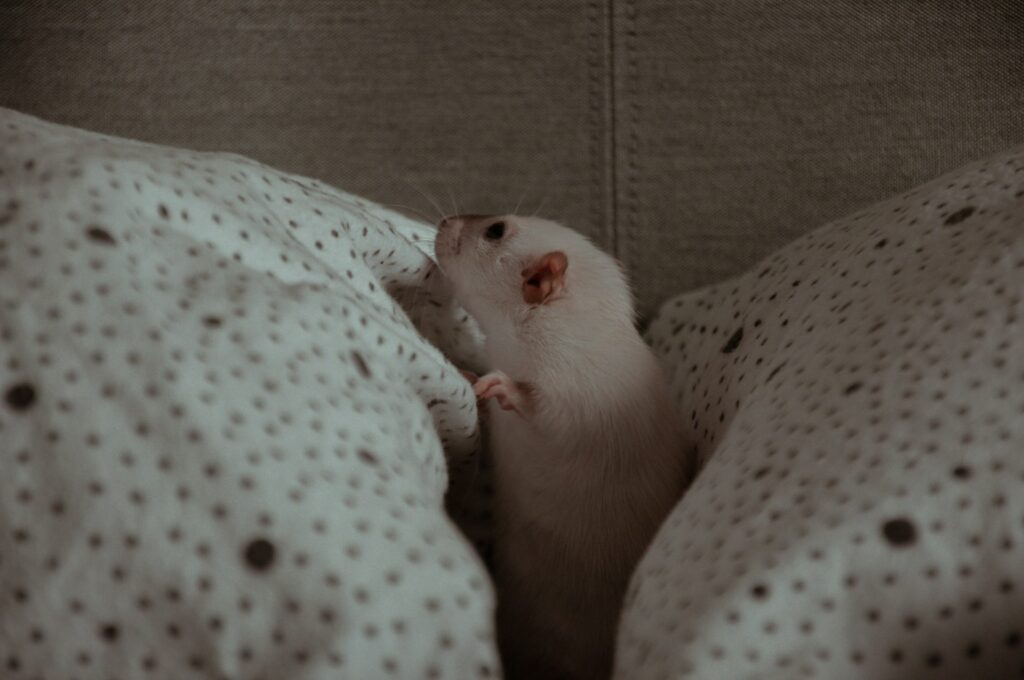Dealing with mice in attic spaces can be daunting, especially under insulation. This guide provides essential steps and tips to effectively rid of rodents and prevent their return, ensuring a clean and safe home environment.
Recognizing Signs of Mice Activity
Identifying a rodent problem early can prevent extensive damage. Signs of mice include scratching sounds, droppings resembling black grains of rice, and nesting materials scattered in attic spaces. These indicators suggest it’s time to take action against these unwelcome attic invaders. Gnawed objects, such as storage boxes and insulation, also signal mice activity. Pay attention to any unusual pet behavior as they may sense the presence of rodents before humans do. Spotting these signs early can significantly aid in quick and effective removal.
Evidence of Nesting and Damage
Mice and other rodents are notorious for using shredded paper, wood chips, and other materials to build their nests. If you find these along with droppings and urine, it’s a clear sign of a mouse infestation. Insulation materials, often disturbed by nesting activities, can also provide evidence of these unwelcome inhabitants.
Bite marks on stored items or electrical wiring are a dangerous sign of rodent infestation. As rodents have sharp teeth capable of gnawing through various materials, they can cause significant damage and even pose a fire risk by damaging electrical wiring.
Distinctive Noises in the Night
Often, the first noticeable sign of a mouse infestation is the sound of scurrying or scratching in the attic during the quiet of the night. These sounds may indicate active mice moving about and can be particularly disturbing.
While these noises are a nuisance, the health risks such as salmonella poisoning from rodent waste should be a greater concern. Hearing these sounds should prompt immediate action to address the infestation.

The Ultimate Guide to Mouse Exclusion Techniques
Effective mouse exclusion involves reinforcing attic insulation and other vulnerable areas. This guide covers practical methods to secure your attic against rodent intrusions, ensuring a clean and rodent-free space.
Step 1 – Inspect and Identify Entry Points
Begin with a thorough inspection of your attic. Look for mouse droppings, which resemble small, brown grains of rice, indicating active mice in the attic. Locate potential entry points such as gaps or holes in the exterior and mark them for repair. Check for chew marks and use sheet metal or other rodent-proof materials to seal these entry points. This initial step is crucial in stopping mice from accessing your attic and establishing a foothold.
Step 2 – Implement Mechanical Exclusion Measures
After identifying entry points, it’s time to implement mechanical exclusion measures. These are physical barriers that prevent mice access, such as steel wool pads or metal sheets over holes and gaps. Rodent waste near these points indicates high-traffic areas that need immediate attention. Exclusion is a key component of disease control and prevention. Sealing off entry points not only stops rodents from entering but also blocks the path of diseases they may carry. This proactive approach is essential for maintaining a healthy living environment.
Step 3 – Sanitization and Disinfection Strategies
With entry points sealed, focus on sanitizing the attic. Remove rodent waste and disinfect the area to eliminate health risks. Special attention should be given to areas with signs of urine and droppings to prevent the spread of pathogens. Trimming tree limbs that provide access to the roof can further safeguard against re-infestation. A clean attic, free from rodent waste and accessible tree branches, is less inviting to mice and supports overall disease control and prevention.

Effective Trapping and Removal Solutions
To get rid of rodents, various traps, including snap, glue, and electronic options, can be effective. Placement near electrical wires and areas with droppings and urine increases the likelihood of capture, reducing the need for repeat business with a pest control company.
Snap Traps and Their Strategic Placement
Snap traps remain a popular choice for their effectiveness. Bait them with peanut butter, a favorite among rodents, and place them in areas with visible signs of activity. Check traps regularly, disposing of dead mice with appropriate safety measures. Positioning traps along walls and near entry points increases capture rates. Swift removal of trapped rodents is crucial to prevent distress and potential health hazards associated with decaying carcasses.
Exploring Alternatives: Glue Boards, Live Traps, and Shock Traps
Alternatives to snap traps include glue boards and live traps, which offer humane capture methods. When laying traps, consider the rodents’ behavior patterns and place them in strategic locations where mice frequently gain access to food and shelter. Shock traps provide another solution, delivering a high-voltage shock to quickly eliminate mice. These should be used with caution, especially in homes with children or pets, and monitored closely to maintain their effectiveness.
Preventative Measures to Keep Mice Out of Attic Insulation
Preventative measures are crucial in maintaining a rodent-free attic. Implement a robust rodent control program that includes regular inspections, repairing bite marks and damage to insulation materials, and replacing the insulation if necessary to deter future rodent infestation.
Importance of Regular Attic Inspection
Regular inspection of attic insulation is instrumental in preventing mice in my attic scenarios. By routinely checking for signs of rodents, such as sharp teeth marks or health hazards like droppings and urine, homeowners can stay one step ahead in rodent control. Identifying and addressing issues promptly can save the cost and effort of dealing with a full-blown rodent infestation. Regular maintenance of attics and crawlspaces is a proactive measure that can significantly reduce the risk of unwanted guests.
Why Sanitation Measures Are Crucial
Sanitation in the attic is not just about cleanliness; it’s a strategic move against rodent invasions. Keeping food items in sealed containers and minimizing clutter reduces the attraction for mice seeking food and nesting materials. Good sanitation practices can deter rodents from settling in your home by cutting off their food supply. This simple yet effective measure can greatly enhance the effectiveness of your rodent control efforts.
Repellents and Defensive Baiting Options
For comprehensive rodent control, repellents and defensive baiting strategies can be employed in attics and crawl spaces. These methods can help discourage rodents from settling in these areas and can serve as an additional line of defense in your rodent control program. Choosing the right repellents and understanding the proper placement of defensive baits are essential for their success. They can act as deterrents, making your attic less appealing to mice and other rodents.
Frequently Asked Questions on Mouse Infestation Control
Addressing common queries, this section clarifies doubts about sealing gaps and cracks, using wood chips as deterrents, and the importance of not leaving food items exposed to prevent mouse infestation.
1. Can professional pest control offer permanent solutions?
Enlisting a pest control company to get rid of rodents can lead to significant reductions in mouse populations, yet it doesn’t always provide a permanent fix. These experts are skilled at removing rodent waste, including droppings and urine, and can safely navigate risks such as chewed electrical wires. However, without ongoing prevention, mice may return. A reputable pest control company focuses not just on immediate removal, but also on long-term strategies to prevent repeat business due to new infestations.
2. Why is pest control considered only a temporary fix?
While pest control companies are adept at clearing out current rodent invaders, they face the challenge of mice being persistent and adaptable creatures. After a professional eradication, if homeowners neglect continuous prevention measures, mice are likely to re-enter. Thus, even with thorough removal of rodent waste and safeguarding of electrical wires, pest control is often seen as a temporary solution, requiring homeowners to remain vigilant in maintaining a rodent-resistant environment to ensure lasting results.
3. Why do you have mice in your attic insulation?
Attic insulation can be a cozy nesting material for rodents. Additionally, warmth escaping from dryer vents and other sources can attract mice seeking shelter from the cold. Seasonal changes can also lead to repeat business for a pest control company, as mice seek shelter from the cold in their attic. It’s essential to identify signs of mice early on to avoid larger mouse nests. Sealing potential entry points with steel wool or hardware cloth can fortify your home against future invasions, ensuring your attic remains secure regardless of the season.
Wrapping Up the Fight Against Attic Rodents
Sealing off entry points is critical in the final push against attic rodents. Mice can exploit the smallest gaps and holes, so attention must be paid to the common areas that attract mice, such as cracks in the foundation, gaps around dryer vents, and openings where electrical wiring enters the home. Utilizing materials like steel wool and hardware cloth can effectively block these passageways, preventing new rodents from entering and turning your attic into their home. After addressing the entry points, vigilance is key to maintaining a rodent-free attic. Regular checks for signs of mice, like shredded paper or mouse nests, are essential. If mouse problems persist, it may be necessary to reassess and repair any compromised areas. By staying proactive and implementing these strategies, homeowners can effectively combat rodent issues and enjoy the peace of mind that comes with a secure and clean attic space.


